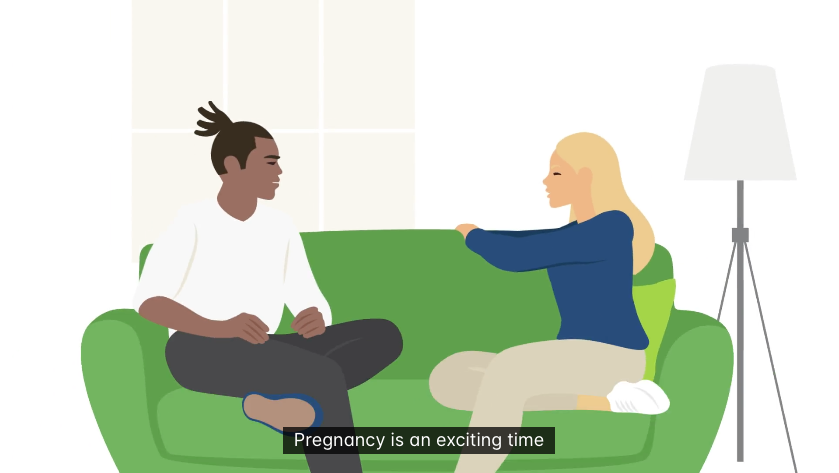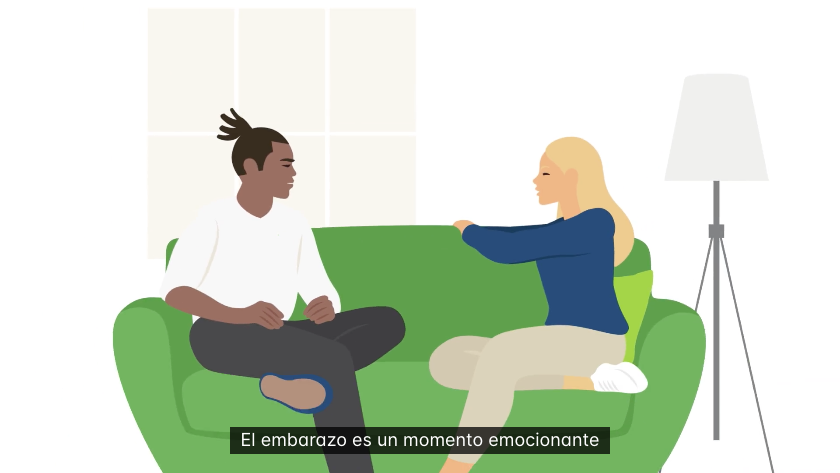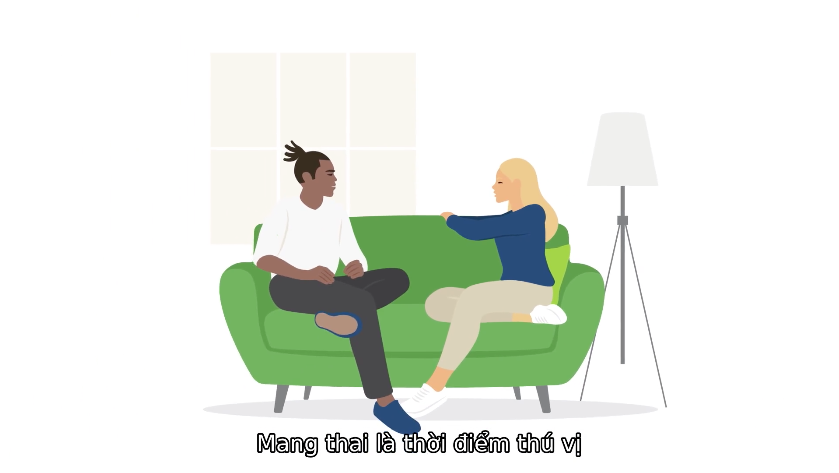Now available: Panorama™ vanishing twin workflow
Learn MoreNow available: Panorama™ vanishing twin workflow Learn More
Panorama™ for your pregnancy
Panorama™, the most ordered NIPT, can assess conditions that can affect your baby’s health by doing a simple blood draw on you.1,2 A pregnant person’s blood contains DNA from them and also from their baby’s placenta. Panorama™ NIPT is a blood test performed during pregnancy that looks at the placental DNA to see if your baby has a high or low chance of having certain chromosomal conditions that could affect its health, along with providing your baby’s sex. Panorama™ delivers a personalized risk report to you and your clinician.

What to expect
CA residents: Find out more about how NIPT is offered under the California Prenatal Screening program and how Panorama can supplement it by clicking here.*
Understanding your results
Your report could state the following:
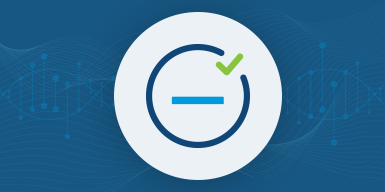
Low Risk
A low risk result means that the chance that your baby has one of the conditions tested by Panorama is very unlikely but not zero — less than 1 in 10,000 for most conditions.1,3
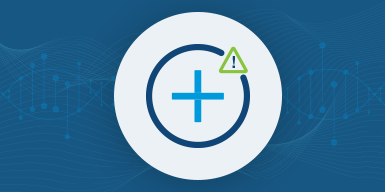
High Risk
Panorama is a screening test, which means that this test does not make a final diagnosis. A high risk result means that your pregnancy has a higher chance of having a specific genetic condition. However, you cannot know for sure if your baby has that condition based on screening results alone.
If you receive a high risk Panorama result, speak with your healthcare provider (HCP) to discuss which next steps you could decide to pursue, such as genetic counseling, detailed ultrasound, and the option of diagnostic testing.
All medical decisions should be made after discussion with your HCP regarding diagnostic testing during the pregnancy, like chorionic villus sampling (CVS) or amniocentesis, or testing the baby after birth.
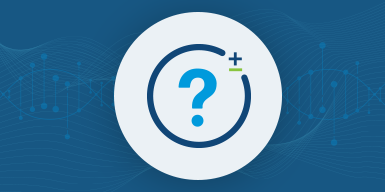
No Result
About 1 in 65 tests could receive a nonreportable result.3 You should speak with your HCP about these result types and whether you should consider having a second blood draw to do the test again. There is also a small chance that Panorama will have a result relating to your genetics or your physical health.1
Conditions Screened For
Panorama screens for common genetic conditions that are caused by extra or missing chromosomes in the baby’s DNA. Because Panorama uses a unique technology to distinguish between the pregnant person’s and the baby’s DNA, it is the only NIPT that tests for triploidy.4 Some conditions, such as Down syndrome, are caused by extra copies of a specific chromosome. Others, such as microdeletions, occur when a chromosome is missing a small piece of genetic information.4
TRISOMIES*
Trisomy 21 (Down syndrome)
Babies with Down syndrome have three copies of chromosome 21 and have intellectual disabilities that range from mild to severe. Children with Down syndrome will need extra medical care depending on the child’s specific health problems. Early intervention has allowed many individuals with Down syndrome to lead healthy and productive lives. The presence of medical conditions, like heart defects, can affect the lifespan in these children and adults; however, most individuals with Down syndrome will live into their 60s. Miscarriage occurs in about 30% of pregnancies with Down syndrome while overall about 1 in 700 babies are born with Down syndrome.
Trisomy 18 (Edwards syndrome)
Babies with trisomy 18 have three copies of chromosome 18 and have severe intellectual disabilities and birth defects typically involving the heart, brain, and kidneys. Babies with trisomy 18 can also have visible birth defects such as an opening in the lip (cleft lip) with or without an opening in the roof of the mouth (cleft palate), a small head, clubbed feet, underdeveloped fingers, and toes, and a small jaw. Unfortunately, most pregnancies with trisomy 18 will miscarry. If born alive, most affected babies with trisomy 18 will pass away within the first few weeks of life. About 10 percent survive to their first birthday. Trisomy 18 occurs in approximately 1 in 3,000 live births.
Trisomy 13 (Patau syndrome)
Babies with trisomy 13 have three copies of chromosome 13 and have severe intellectual disabilities. They often have birth defects involving the heart, brain, and kidneys. Visible abnormalities include extra fingers and/or toes or an opening in the lip, with or without an opening in the palate. Given the severe disabilities, most pregnancies affected by trisomy 13 will miscarry. If born alive, most affected babies with trisomy 13 will pass away within the first few weeks of life. About 10 percent survive to their first birthday. Trisomy 13 occurs in approximately 1 in 5,000 live births.
SEX CHROMOSOME ANEUPLOIDIES**
Monosomy X (Turner syndrome)
Babies with monosomy X are biological females who have one X chromosome instead of two. Unfortunately, a high proportion of pregnancies with monosomy X will result in a miscarriage in the first or second trimester of pregnancy. Babies with monosomy X that make it to term may have heart defects, learning difficulties, and infertility. In most cases, babies with monosomy X will need extra medical care including hormone therapy at various stages of life.
XXY Syndrome (Klinefelter Syndrome)
Babies with XXY syndrome have two X chromosomes and one Y chromosome (XXY). This condition can be associated with learning difficulties and behavioral problems. People with Klinefelter syndrome might be infertile. About 1 in 500 biological males will be born with Klinefelter syndrome.
Triple X syndrome
Babies with Triple X syndrome have three X chromosomes (XXX). Children with this condition could be taller than average and might experience learning difficulties or behavioral problems. Approximately 1 in 800 biological females will be born with three X chromosomes.
XYY Syndrome (Jacob's Syndrome)
Babies with XYY syndrome have one X chromosome and two Y chromosomes (XYY). Most babies with XYY syndrome do not have any birth defects. Children with XYY could be taller than average and have an increased chance for learning, speech, and behavioral problems. Approximately 1 in 1,000 biological males will be born with one X chromosome and two Y chromosomes.
MICRODELETIONS**
22q11.2 deletion syndrome
22q11.2 deletion syndrome, also called DiGeorge syndrome or Velo-Cardio-Facial syndrome (VCFS), is caused by a missing piece of chromosome number 22. About one in every 2,000 babies is born with 22q11.2 deletion syndrome. The majority of children with this disorder have heart defects, immune system problems, and specific facial features. Most children with 22q.11.2 deletion syndrome have mild-to-moderate intellectual disability and speech delays; some will also have low calcium levels, kidney problems, feeding problems, and/or seizures. About one in five children with 22q11.2 deletion syndrome have autism spectrum disorder; 1 in 4 adults with 22q11.2 deletion syndrome have a psychiatric illness, like schizophrenia.
Prader-Willi syndrome†
Prader-Willi syndrome occurs when either a small piece of chromosome 15 is missing or when both copies of chromosome 15 come from the same parent (called uniparental disomy, or UPD). Babies with Prader-Willi syndrome have low muscle tone and problems with growth and feeding. Children with Prader-Willi syndrome have delayed milestones, short stature, rapid weight gain leading to obesity, and intellectual disability. About 1 in 10,000 babies are born with Prader-Willi syndrome.
Angelman syndrome†
Angelman syndrome happens when either a small piece of chromosome 15 is missing, or when both copies of chromosome 15 come from the same parent (called uniparental disomy, or UPD). About 1 in 12,000 babies are born with Angelman syndrome. Babies and children with Angelman syndrome have severe intellectual disability, delayed milestones, seizures, and problems with balance and walking.
1p36 deletion syndrome
1p36 deletion syndrome, also referred to as Monosomy 1p36 syndrome is caused by a missing piece of chromosome 1. Children with 1p36 deletion syndrome have intellectual disabilities. Most have heart defects and weak muscle tone. About half of affected individuals have seizures (epilepsy), behavioral problems, and hearing loss. Some children with 1p36 deletion syndrome also have vision problems or additional birth defects of other organs. About 1 in 5,000 newborn babies has 1p36 deletion syndrome.
Cri-du-chat syndrome
A missing piece of chromosome 5 causes Cri-du-chat syndrome, also called 5p- (5p minus) syndrome. The name “Cri-du-chat” was given to this syndrome due to the high-pitched, cat-like cry that babies with this syndrome often make. Babies with Cri-du-chat syndrome typically have low birth weight, a small head size, and weak muscle tone. Feeding and breathing problems are common in infancy. Children with this disorder have moderate-to-severe intellectual disability, including speech and language delays. They may also have growth delays, behavior problems, and some have curvature of the spine (scoliosis). About one in every 20,000 babies is born with Cri-du-chat syndrome. They may also have heart defects, growth delay, behavior problems and some have curvature of the spine.
TRIPLOIDY*
Only NIPT that tests for triploidy
Babies with triploidy have a complete extra set of chromosomes for a total of 69 chromosomes instead of the usual 46. At 10 weeks gestation, one in 1,000 pregnancies is affected by triploidy. It is extremely rare for these pregnancies to reach term as they typically spontaneously miscarry early in pregnancy. Those few liveborns usually pass away within days of delivery due to heart, brain, and kidney problems. Babies with triploidy also often have birth defects affecting the extremities and face.
Carrying a baby with triploidy can increase a mother’s risk for a variety of conditions: pre-eclampsia (which can lead to seizures) and excessive bleeding after delivery. In rare instances, triploid pregnancies can persist and progress to a type of cancer called choriocarcinoma. Knowing about triploidy allows the physician to monitor the health of the mother appropriately.
Complete Test Specifications for Singleton, Egg Donor, Gestational Carrier, and Monozygotic (Identical) Twins
Definition of performance terms
Sensitivity is the ability to correctly identify a truly high risk case as high risk. For example, in a group of Trisomy 21 cases, Panorama will correctly identify more than 99% of those cases.
Specificity is the ability to correctly identify an unaffected case as low risk.
Positive Predictive Value (PPV) is the likelihood the result says high risk and the fetus is actually affected. For example, when Panorama shows a high risk result for Trisomy 21, there is a 95% chance that the fetus is affected by Trisomy 21. In other words, 5% of the time, you could get a high risk result when the fetus is not affected by Trisomy 21.
Negative Predictive Value (NPV) is the likelihood the result says low risk and the fetus is truly not affected.
| Condition | Sensitivity (95% CI) | Specificity (95% CI) | PPV | NPV |
|---|---|---|---|---|
| Trisomy 21*3,7 | 99.0% (CI 97.1-100) | >99% (CI 99.93-99.99) | 95% | >99.99%‡ |
| Trisomy 18*3,7 | 94.1% (CI 82.9-100) | >99% (CI 99.96-100) | 91% | >99.99%‡ |
| Trisomy 13*3,7 | >99% (CI 73.5-100) | >99% (CI 99.96-100) | 68% | >99.99%‡ |
| Monosomy X**7,8 | 94.7% (CI 74.0-99.9) | >99% (CI 99.7-100) | 78% | >99.99%‡ |
| Triploidy**6,9 | >99% (CI 66.4-100) | >99% (CI 99.5-100) | 7.5% | >99.99%‡ |
| XXX, XXY, XYY**11 | 73.1% (CI 61.0-85.1) | 99.9% (CI 99.90-99.99) | 83% | 99.87%‡ |
| 22q11.2 deletion syndrome**5 | 83.3% (CI 51.6-97.9) | >99% (CI 99.91-99.98) | 53% | 99.9%||(CI 99.9-100) |
| 1p36 deletion syndrome**12,13 | >99% (CI 2.5-100) | >99% (CI 99.1-100) | 7-17%|| | 99.98-99.99%|| |
| Angelman syndrome**†12,13 | 95.5% (CI 77.2-99.9) | >99% (CI 99.1-100) | 10%§ | >99.99% |
| Cri-du-chat syndrome**12,13 | >99% (CI 85.8-100) | >99% (CI 99.1-100) | 2-5%|| | >99.99% |
| Prader-Willi syndrome**†12,13 | 93.8% (CI 69.8-99.8) | >99% (CI 99.1-100) | 5% | >99.99% |
| Female | >99.9% (CI 99.4-100) | >99.9% (CI 99.5-100) | ||
| Male | >99.9% (CI 99.5-100) | >99.9% (CI 99.4-100) |
Test Specifications for Dizygotic (Nonidentical) Twins10
| Condition | PPV |
|---|---|
| Trisomy 21 | 88% |
| Trisomy 18 | 70% |
| Trisomy 13 | 67% |
More than 10% of dizygotic pregnancies may not receive a result due to low fetal fractions.14
Is Panorama™ right for you?
We’re here to help you find out
References
1Natera internal data on file
2Definitive Healthcare report to identify billing for NIPT based on US Clearinghouse for Medical Claims using CPT codes 81420, 81507, 81422.
3Dar et al. Am J Obstet Gynecol. 2022 Aug;227(2):259.e1-259.e14.
4ACOG Practice Bulletin 226. Obstet Gynecol. 2020 Oct;136(4):859-867.
5Dar et al. Am J Obstet Gynecol. 2022. https://doi.org/10.1016/j.ajog.2022.01.002
6Kantor V, et al. Prenat Diagn. 2022 Jul;42(8):994-999.
7DiNonno et al. J Clin Med. 2019 Aug 26;8(9):1311.
8Martin et al. ISUOG World Congress 2022: September, 2022.
9Nicolaides KH et al. Fetal Diagn Ther. 2014;35(3):212-7. https://doi.org/10.1159/000355655
10Kantor V, et al. Prenat Diagn. 2022 Dec;42(13).
11Martin K et al. Genet in Med. 2023. doi: https://doi.org/10.1016/j.gim.2023.100879
12Martin et al. Clin Genet. 2018 Feb;93(2):293-300.
13Wapner et al. Am J Obstet Gynecol. 2015 Mar;212(3):332.e1-9.
14Norwitz et al. J Clin Med. 2019 Jun; 8:937.
Footnotes
* CA residents: If your clinician ordered screening through the California Prenatal Screening program using Natera's Vasistera™ NIPT, Panorama™ will only screen for supplemental conditions. If this is the case, trisomies 21, 18 and 13, and fetal sex (optional) will be screened using Vasistera™ NIPT and will be reported separately.
** Not available for egg-donor or gestational carrier pregnancies or in cases of dizygotic (nonidentical) twins. Triploidy and microdeletions except for 22q11.2 deletions are not available for monozygotic (identical) twins.
† This test has been validated on full region deletions of Prader-Willi syndrome/Angelman syndrome (PWS/AS) only and might be unable to detect smaller deletions. It has not been validated for other molecular mechanisms which could cause PWS/AS such as uniparental disomy (UPD) or methylation.
‡ Ongoing clinical follow-up is performed to ensure the NPV does not fall below the quoted value but follow up is not obtained for all low risk calls.
§ PPV for 22q11.2 deletion syndrome and Angelman syndrome in published studies was 53% and 10% respectively when no ultrasound anomalies were seen and was up to 100% when ultrasound anomalies were seen prior to testing.
|| Dependent upon fetal fraction (FF). For 22q11.2 deletion syndrome, only the paternal allele is evaluated at FF ≤ 6.5%. For 1p36 deletion syndrome and Cri-du-chat syndrome, only the paternal allele is evaluated at FF < 7%. For Angelman syndrome, no risk assessment is reported at FF < 7%. For Prader-Willi syndrome, no risk assessment is reported at FF ≤ 2.8%.
